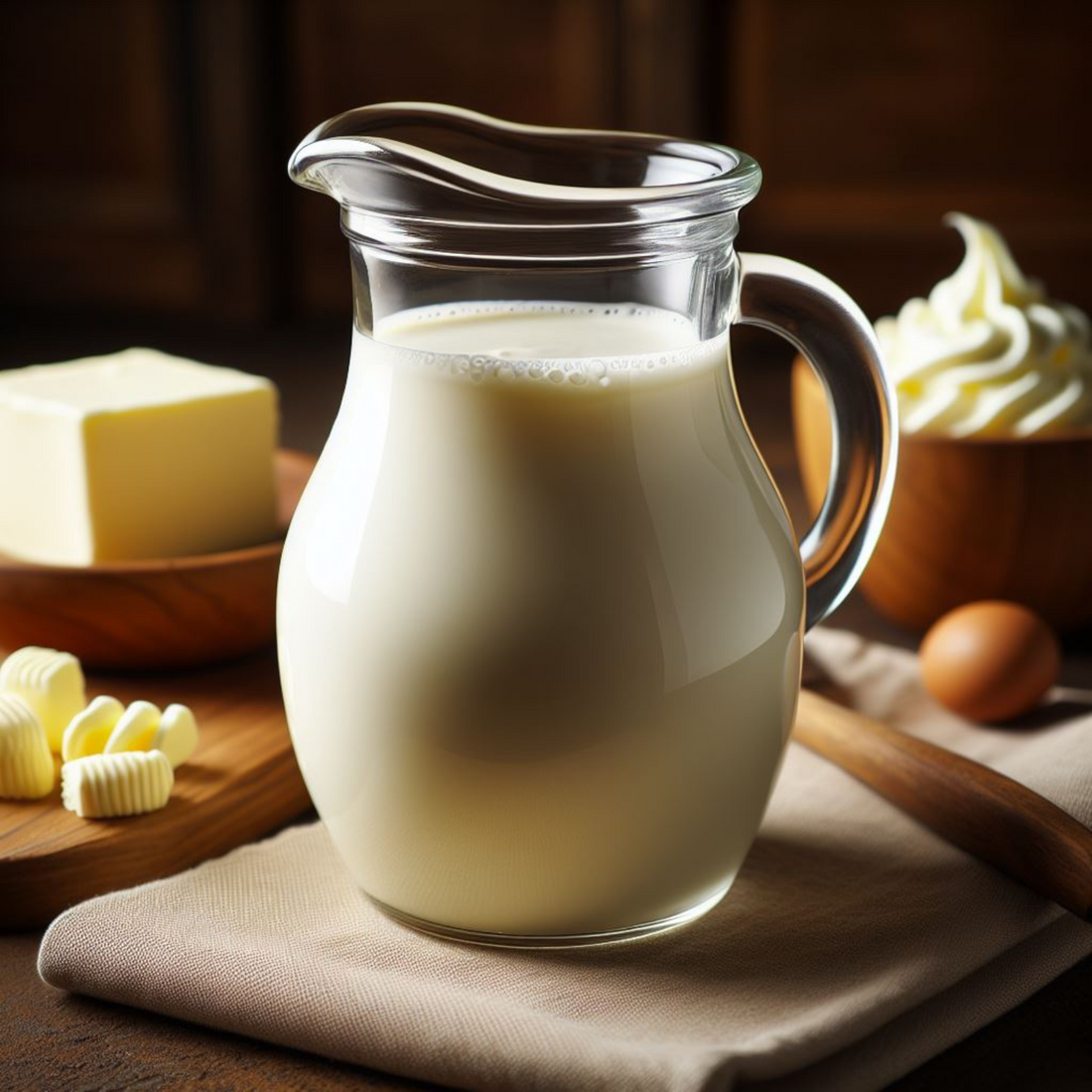Buttermilk, with its tangy taste and creamy texture, is a versatile dairy product that has been enjoyed by various cultures for centuries. While its name suggests a link to butter, the story of buttermilk's history is much more intriguing and diverse. Join us as we journey through time to explore the fascinating origins and evolution of buttermilk, from ancient civilizations to its beloved status in contemporary culinary delights. We will also delve into its significance in Black culture, where it holds a special place in traditions, recipes, and stories passed down through generations, including its historical use in feeding enslaved people.
- The Roots of Buttermilk in Ancient Times:
The origins of buttermilk can be traced back to ancient cultures, where it was born out of necessity and resourcefulness. In early agricultural societies, milk was a vital food source, and butter-making became a common practice. As cream was churned to produce butter, the liquid residue left behind became what we now know as buttermilk. These early societies quickly recognized the value of buttermilk, utilizing it not only as a refreshing beverage but also as a crucial ingredient in various culinary preparations.
- Buttermilk Across Cultures:
Throughout history, different cultures embraced buttermilk and incorporated it into their cuisines in unique ways. In parts of Europe, buttermilk was cherished for its refreshing qualities and was often consumed as a cooling drink during hot summers. In Indian cuisine, buttermilk known as "lassi" has become a beloved beverage, commonly flavored with spices or fruits. In Africa, traditional buttermilk was enjoyed as a staple food, providing nourishment and hydration in arid regions.
- Buttermilk's Significance in Black Culture and Feeding Enslaved People:
In Black culture, buttermilk holds special significance in traditional recipes and culinary practices passed down through generations. It has been a staple in soul food and Southern cooking, where it imparts a unique tangy flavor to dishes like buttermilk biscuits, cornbread, and fried chicken. The connection to buttermilk in these recipes is a testament to the resilience and ingenuity of Black culinary traditions, preserving and celebrating cultural heritage.
Beyond its culinary importance, buttermilk also played a crucial role in the history of enslaved people in America. As a byproduct of churning butter, buttermilk was often a more accessible source of nourishment for the enslaved population than fresh milk. Enslaved individuals, who were often subjected to meager and inadequate diets, would use buttermilk as a supplemental food, providing essential nutrients and hydration.
The story of buttermilk is one that spans millennia and transcends cultural boundaries. From ancient civilizations to modern kitchens, buttermilk's journey has been one of adaptation, appreciation, and evolution. Its significance in Black culture, where it enriches beloved traditional recipes and culinary heritage, is intertwined with its historical use in feeding enslaved people. As we savor a glass of tangy buttermilk or enjoy a delectable buttermilk-based dish, let us not only appreciate its rich history and global legacy but also remember the resilience and strength of Black culture in preserving and passing down culinary traditions throughout history.
